SOC 103A: Policy Process Report - Sydney's Injecting Center
VerifiedAdded on 2023/06/12
|9
|2078
|455
Report
AI Summary
This report examines the policy development process of Sydney's Medically Supervised Injecting Center in Kings Cross, Australia, in relation to the National Drug Strategic Framework. It analyzes the policy process through the stages of agenda setting, formulation, adoption, implementation, and evaluation. The report highlights the positive and negative aspects of each stage, considering factors like media influence, stakeholder involvement, and resource allocation. The analysis concludes that while the policy-making process is complex and faces challenges, understanding these challenges is crucial for effective social policy development, especially in healthcare.
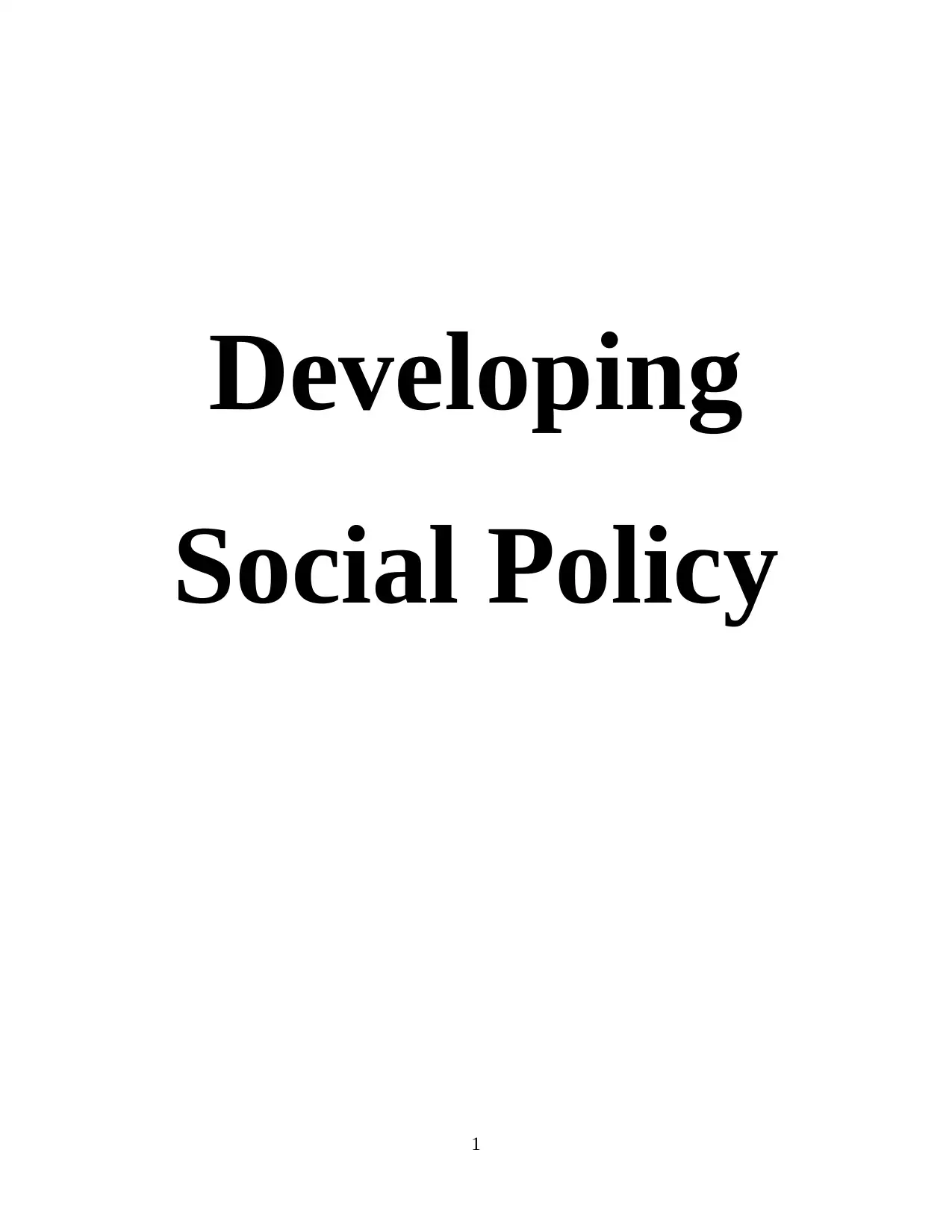
Developing
Social Policy
1
Social Policy
1
Paraphrase This Document
Need a fresh take? Get an instant paraphrase of this document with our AI Paraphraser
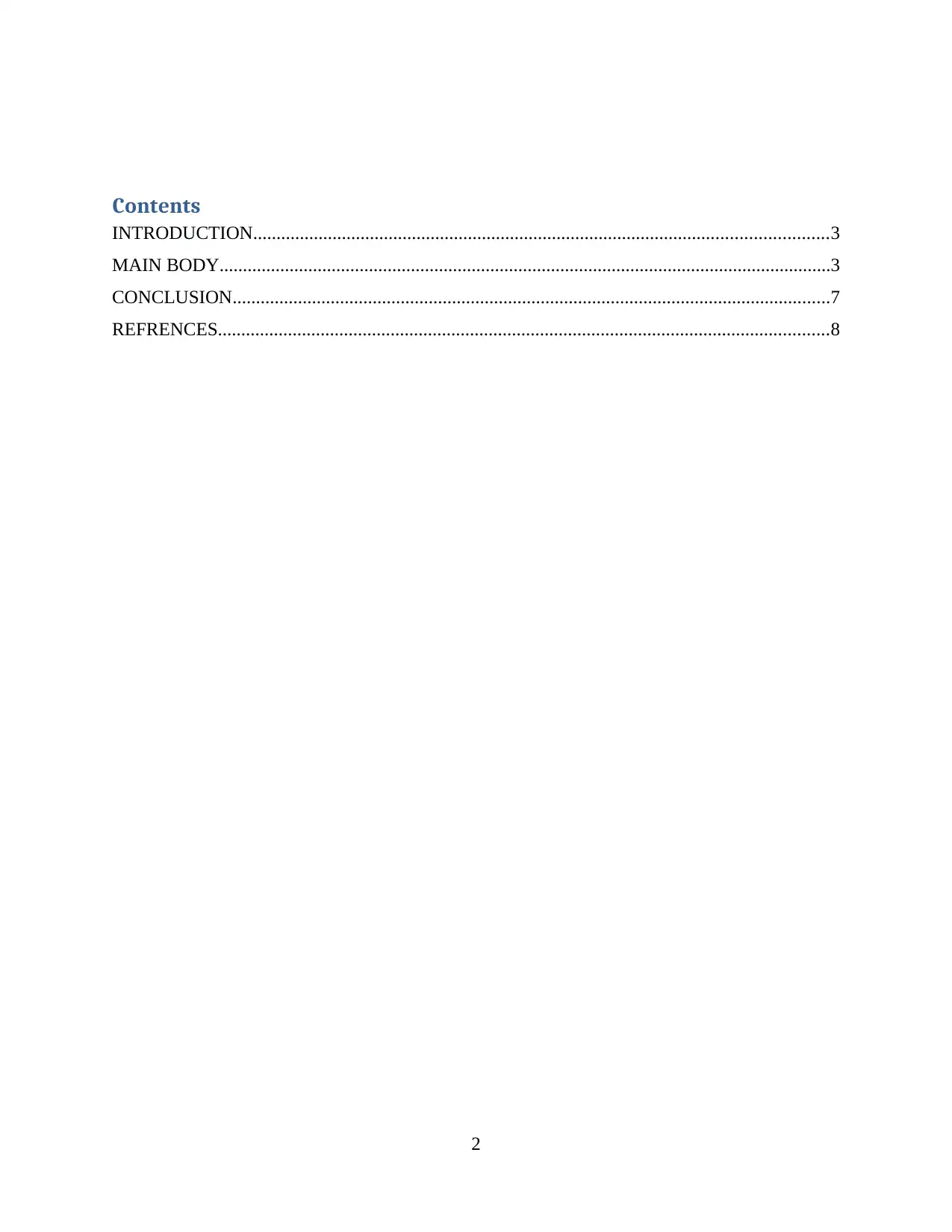
Contents
INTRODUCTION...........................................................................................................................3
MAIN BODY...................................................................................................................................3
CONCLUSION................................................................................................................................7
REFRENCES...................................................................................................................................8
2
INTRODUCTION...........................................................................................................................3
MAIN BODY...................................................................................................................................3
CONCLUSION................................................................................................................................7
REFRENCES...................................................................................................................................8
2

3
⊘ This is a preview!⊘
Do you want full access?
Subscribe today to unlock all pages.

Trusted by 1+ million students worldwide
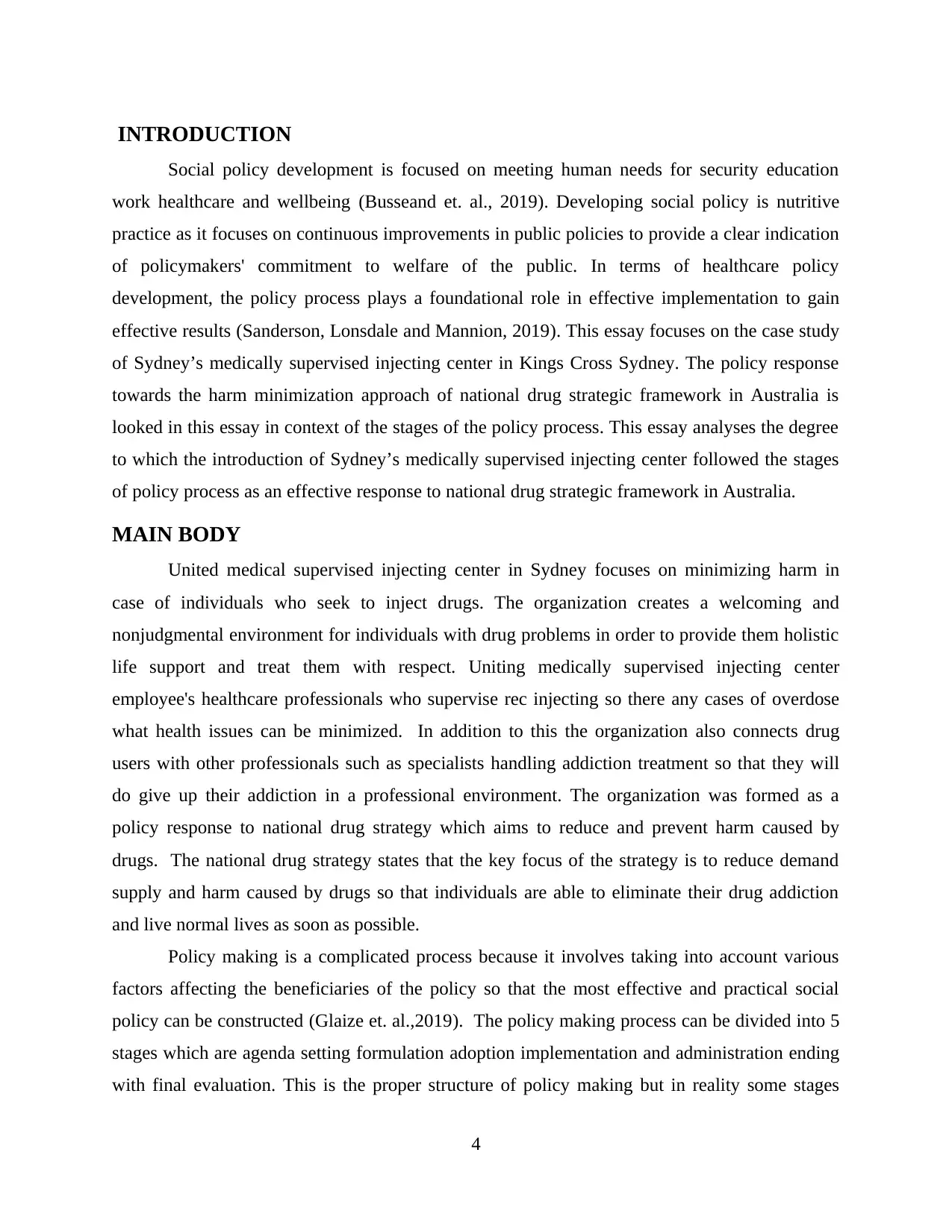
INTRODUCTION
Social policy development is focused on meeting human needs for security education
work healthcare and wellbeing (Busseand et. al., 2019). Developing social policy is nutritive
practice as it focuses on continuous improvements in public policies to provide a clear indication
of policymakers' commitment to welfare of the public. In terms of healthcare policy
development, the policy process plays a foundational role in effective implementation to gain
effective results (Sanderson, Lonsdale and Mannion, 2019). This essay focuses on the case study
of Sydney’s medically supervised injecting center in Kings Cross Sydney. The policy response
towards the harm minimization approach of national drug strategic framework in Australia is
looked in this essay in context of the stages of the policy process. This essay analyses the degree
to which the introduction of Sydney’s medically supervised injecting center followed the stages
of policy process as an effective response to national drug strategic framework in Australia.
MAIN BODY
United medical supervised injecting center in Sydney focuses on minimizing harm in
case of individuals who seek to inject drugs. The organization creates a welcoming and
nonjudgmental environment for individuals with drug problems in order to provide them holistic
life support and treat them with respect. Uniting medically supervised injecting center
employee's healthcare professionals who supervise rec injecting so there any cases of overdose
what health issues can be minimized. In addition to this the organization also connects drug
users with other professionals such as specialists handling addiction treatment so that they will
do give up their addiction in a professional environment. The organization was formed as a
policy response to national drug strategy which aims to reduce and prevent harm caused by
drugs. The national drug strategy states that the key focus of the strategy is to reduce demand
supply and harm caused by drugs so that individuals are able to eliminate their drug addiction
and live normal lives as soon as possible.
Policy making is a complicated process because it involves taking into account various
factors affecting the beneficiaries of the policy so that the most effective and practical social
policy can be constructed (Glaize et. al.,2019). The policy making process can be divided into 5
stages which are agenda setting formulation adoption implementation and administration ending
with final evaluation. This is the proper structure of policy making but in reality some stages
4
Social policy development is focused on meeting human needs for security education
work healthcare and wellbeing (Busseand et. al., 2019). Developing social policy is nutritive
practice as it focuses on continuous improvements in public policies to provide a clear indication
of policymakers' commitment to welfare of the public. In terms of healthcare policy
development, the policy process plays a foundational role in effective implementation to gain
effective results (Sanderson, Lonsdale and Mannion, 2019). This essay focuses on the case study
of Sydney’s medically supervised injecting center in Kings Cross Sydney. The policy response
towards the harm minimization approach of national drug strategic framework in Australia is
looked in this essay in context of the stages of the policy process. This essay analyses the degree
to which the introduction of Sydney’s medically supervised injecting center followed the stages
of policy process as an effective response to national drug strategic framework in Australia.
MAIN BODY
United medical supervised injecting center in Sydney focuses on minimizing harm in
case of individuals who seek to inject drugs. The organization creates a welcoming and
nonjudgmental environment for individuals with drug problems in order to provide them holistic
life support and treat them with respect. Uniting medically supervised injecting center
employee's healthcare professionals who supervise rec injecting so there any cases of overdose
what health issues can be minimized. In addition to this the organization also connects drug
users with other professionals such as specialists handling addiction treatment so that they will
do give up their addiction in a professional environment. The organization was formed as a
policy response to national drug strategy which aims to reduce and prevent harm caused by
drugs. The national drug strategy states that the key focus of the strategy is to reduce demand
supply and harm caused by drugs so that individuals are able to eliminate their drug addiction
and live normal lives as soon as possible.
Policy making is a complicated process because it involves taking into account various
factors affecting the beneficiaries of the policy so that the most effective and practical social
policy can be constructed (Glaize et. al.,2019). The policy making process can be divided into 5
stages which are agenda setting formulation adoption implementation and administration ending
with final evaluation. This is the proper structure of policy making but in reality some stages
4
Paraphrase This Document
Need a fresh take? Get an instant paraphrase of this document with our AI Paraphraser
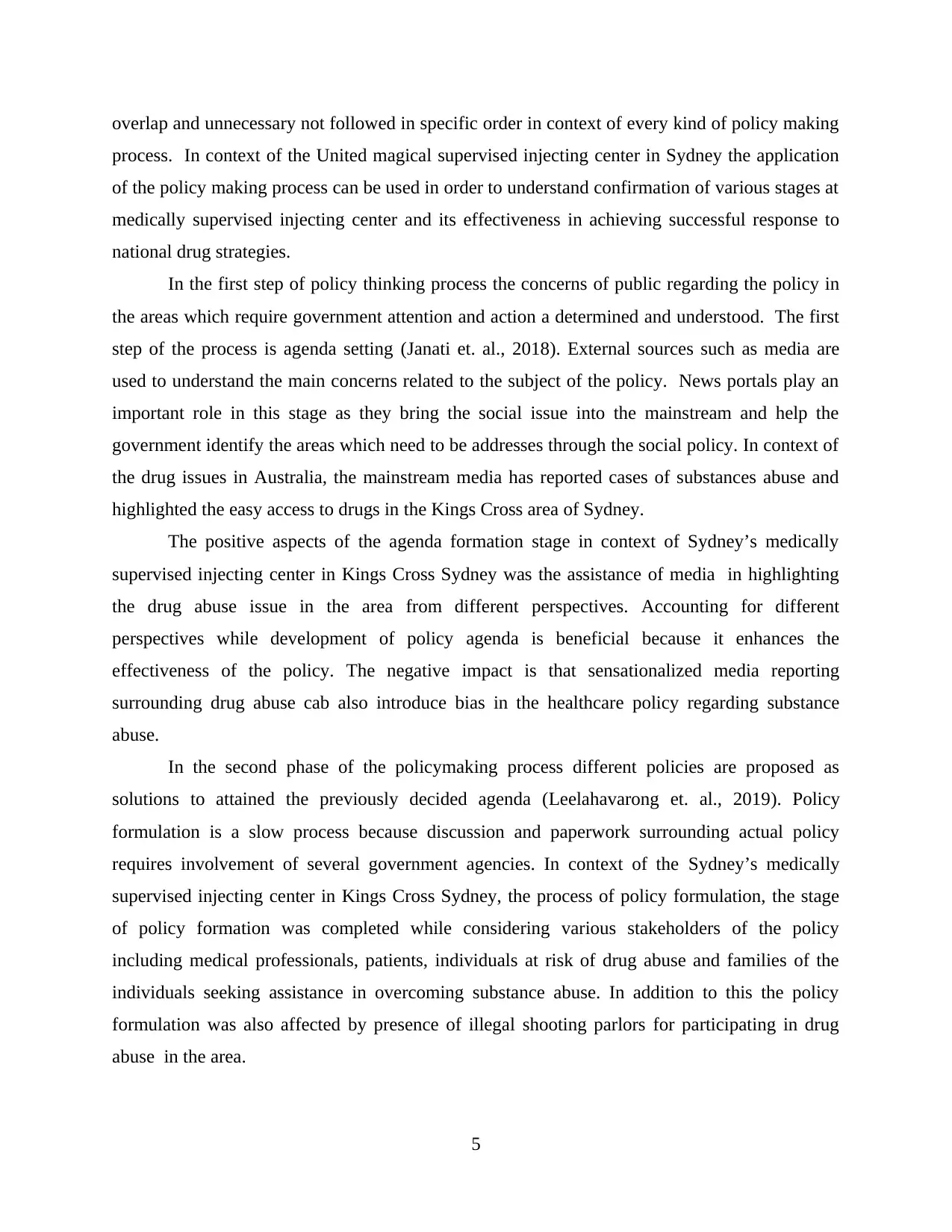
overlap and unnecessary not followed in specific order in context of every kind of policy making
process. In context of the United magical supervised injecting center in Sydney the application
of the policy making process can be used in order to understand confirmation of various stages at
medically supervised injecting center and its effectiveness in achieving successful response to
national drug strategies.
In the first step of policy thinking process the concerns of public regarding the policy in
the areas which require government attention and action a determined and understood. The first
step of the process is agenda setting (Janati et. al., 2018). External sources such as media are
used to understand the main concerns related to the subject of the policy. News portals play an
important role in this stage as they bring the social issue into the mainstream and help the
government identify the areas which need to be addresses through the social policy. In context of
the drug issues in Australia, the mainstream media has reported cases of substances abuse and
highlighted the easy access to drugs in the Kings Cross area of Sydney.
The positive aspects of the agenda formation stage in context of Sydney’s medically
supervised injecting center in Kings Cross Sydney was the assistance of media in highlighting
the drug abuse issue in the area from different perspectives. Accounting for different
perspectives while development of policy agenda is beneficial because it enhances the
effectiveness of the policy. The negative impact is that sensationalized media reporting
surrounding drug abuse cab also introduce bias in the healthcare policy regarding substance
abuse.
In the second phase of the policymaking process different policies are proposed as
solutions to attained the previously decided agenda (Leelahavarong et. al., 2019). Policy
formulation is a slow process because discussion and paperwork surrounding actual policy
requires involvement of several government agencies. In context of the Sydney’s medically
supervised injecting center in Kings Cross Sydney, the process of policy formulation, the stage
of policy formation was completed while considering various stakeholders of the policy
including medical professionals, patients, individuals at risk of drug abuse and families of the
individuals seeking assistance in overcoming substance abuse. In addition to this the policy
formulation was also affected by presence of illegal shooting parlors for participating in drug
abuse in the area.
5
process. In context of the United magical supervised injecting center in Sydney the application
of the policy making process can be used in order to understand confirmation of various stages at
medically supervised injecting center and its effectiveness in achieving successful response to
national drug strategies.
In the first step of policy thinking process the concerns of public regarding the policy in
the areas which require government attention and action a determined and understood. The first
step of the process is agenda setting (Janati et. al., 2018). External sources such as media are
used to understand the main concerns related to the subject of the policy. News portals play an
important role in this stage as they bring the social issue into the mainstream and help the
government identify the areas which need to be addresses through the social policy. In context of
the drug issues in Australia, the mainstream media has reported cases of substances abuse and
highlighted the easy access to drugs in the Kings Cross area of Sydney.
The positive aspects of the agenda formation stage in context of Sydney’s medically
supervised injecting center in Kings Cross Sydney was the assistance of media in highlighting
the drug abuse issue in the area from different perspectives. Accounting for different
perspectives while development of policy agenda is beneficial because it enhances the
effectiveness of the policy. The negative impact is that sensationalized media reporting
surrounding drug abuse cab also introduce bias in the healthcare policy regarding substance
abuse.
In the second phase of the policymaking process different policies are proposed as
solutions to attained the previously decided agenda (Leelahavarong et. al., 2019). Policy
formulation is a slow process because discussion and paperwork surrounding actual policy
requires involvement of several government agencies. In context of the Sydney’s medically
supervised injecting center in Kings Cross Sydney, the process of policy formulation, the stage
of policy formation was completed while considering various stakeholders of the policy
including medical professionals, patients, individuals at risk of drug abuse and families of the
individuals seeking assistance in overcoming substance abuse. In addition to this the policy
formulation was also affected by presence of illegal shooting parlors for participating in drug
abuse in the area.
5
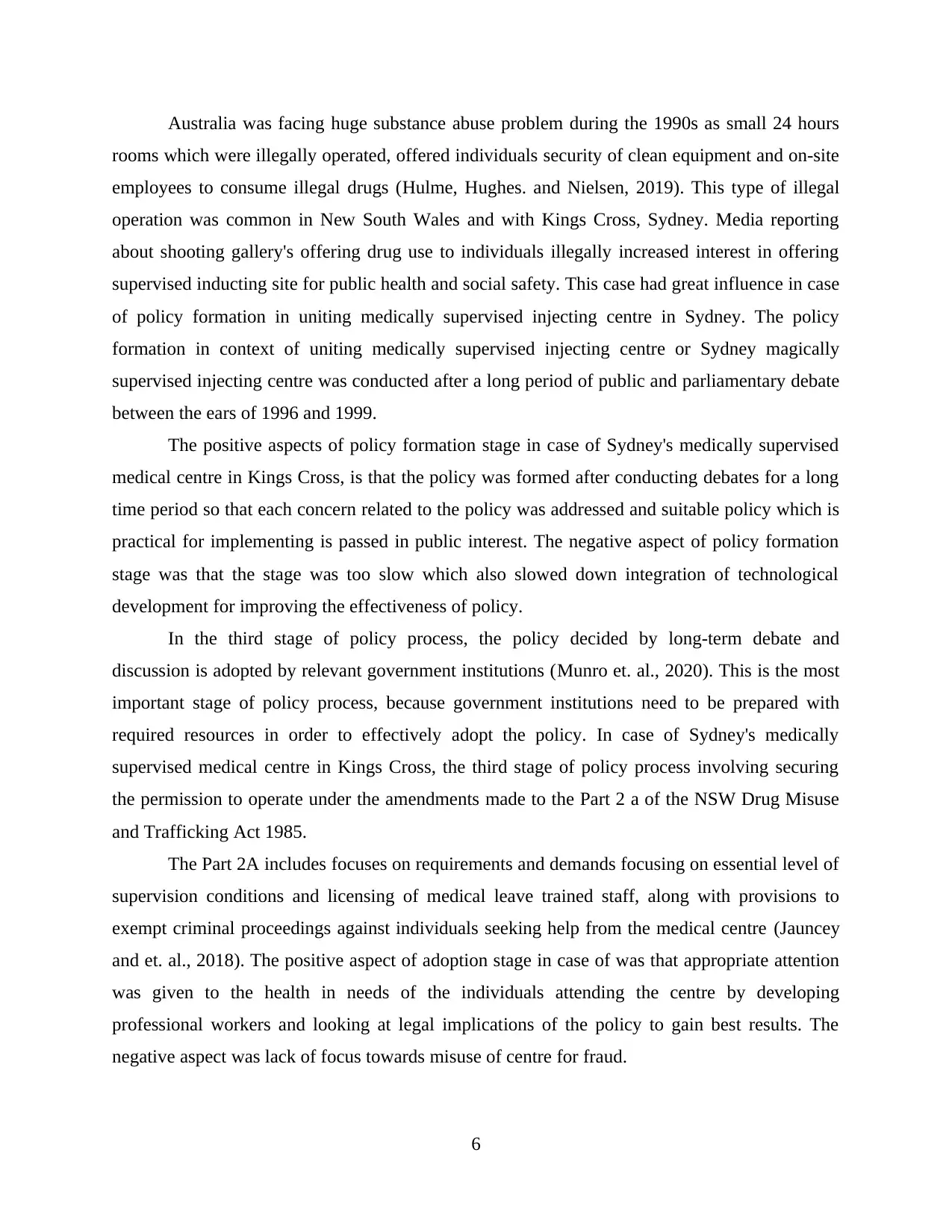
Australia was facing huge substance abuse problem during the 1990s as small 24 hours
rooms which were illegally operated, offered individuals security of clean equipment and on-site
employees to consume illegal drugs (Hulme, Hughes. and Nielsen, 2019). This type of illegal
operation was common in New South Wales and with Kings Cross, Sydney. Media reporting
about shooting gallery's offering drug use to individuals illegally increased interest in offering
supervised inducting site for public health and social safety. This case had great influence in case
of policy formation in uniting medically supervised injecting centre in Sydney. The policy
formation in context of uniting medically supervised injecting centre or Sydney magically
supervised injecting centre was conducted after a long period of public and parliamentary debate
between the ears of 1996 and 1999.
The positive aspects of policy formation stage in case of Sydney's medically supervised
medical centre in Kings Cross, is that the policy was formed after conducting debates for a long
time period so that each concern related to the policy was addressed and suitable policy which is
practical for implementing is passed in public interest. The negative aspect of policy formation
stage was that the stage was too slow which also slowed down integration of technological
development for improving the effectiveness of policy.
In the third stage of policy process, the policy decided by long-term debate and
discussion is adopted by relevant government institutions (Munro et. al., 2020). This is the most
important stage of policy process, because government institutions need to be prepared with
required resources in order to effectively adopt the policy. In case of Sydney's medically
supervised medical centre in Kings Cross, the third stage of policy process involving securing
the permission to operate under the amendments made to the Part 2 a of the NSW Drug Misuse
and Trafficking Act 1985.
The Part 2A includes focuses on requirements and demands focusing on essential level of
supervision conditions and licensing of medical leave trained staff, along with provisions to
exempt criminal proceedings against individuals seeking help from the medical centre (Jauncey
and et. al., 2018). The positive aspect of adoption stage in case of was that appropriate attention
was given to the health in needs of the individuals attending the centre by developing
professional workers and looking at legal implications of the policy to gain best results. The
negative aspect was lack of focus towards misuse of centre for fraud.
6
rooms which were illegally operated, offered individuals security of clean equipment and on-site
employees to consume illegal drugs (Hulme, Hughes. and Nielsen, 2019). This type of illegal
operation was common in New South Wales and with Kings Cross, Sydney. Media reporting
about shooting gallery's offering drug use to individuals illegally increased interest in offering
supervised inducting site for public health and social safety. This case had great influence in case
of policy formation in uniting medically supervised injecting centre in Sydney. The policy
formation in context of uniting medically supervised injecting centre or Sydney magically
supervised injecting centre was conducted after a long period of public and parliamentary debate
between the ears of 1996 and 1999.
The positive aspects of policy formation stage in case of Sydney's medically supervised
medical centre in Kings Cross, is that the policy was formed after conducting debates for a long
time period so that each concern related to the policy was addressed and suitable policy which is
practical for implementing is passed in public interest. The negative aspect of policy formation
stage was that the stage was too slow which also slowed down integration of technological
development for improving the effectiveness of policy.
In the third stage of policy process, the policy decided by long-term debate and
discussion is adopted by relevant government institutions (Munro et. al., 2020). This is the most
important stage of policy process, because government institutions need to be prepared with
required resources in order to effectively adopt the policy. In case of Sydney's medically
supervised medical centre in Kings Cross, the third stage of policy process involving securing
the permission to operate under the amendments made to the Part 2 a of the NSW Drug Misuse
and Trafficking Act 1985.
The Part 2A includes focuses on requirements and demands focusing on essential level of
supervision conditions and licensing of medical leave trained staff, along with provisions to
exempt criminal proceedings against individuals seeking help from the medical centre (Jauncey
and et. al., 2018). The positive aspect of adoption stage in case of was that appropriate attention
was given to the health in needs of the individuals attending the centre by developing
professional workers and looking at legal implications of the policy to gain best results. The
negative aspect was lack of focus towards misuse of centre for fraud.
6
⊘ This is a preview!⊘
Do you want full access?
Subscribe today to unlock all pages.

Trusted by 1+ million students worldwide
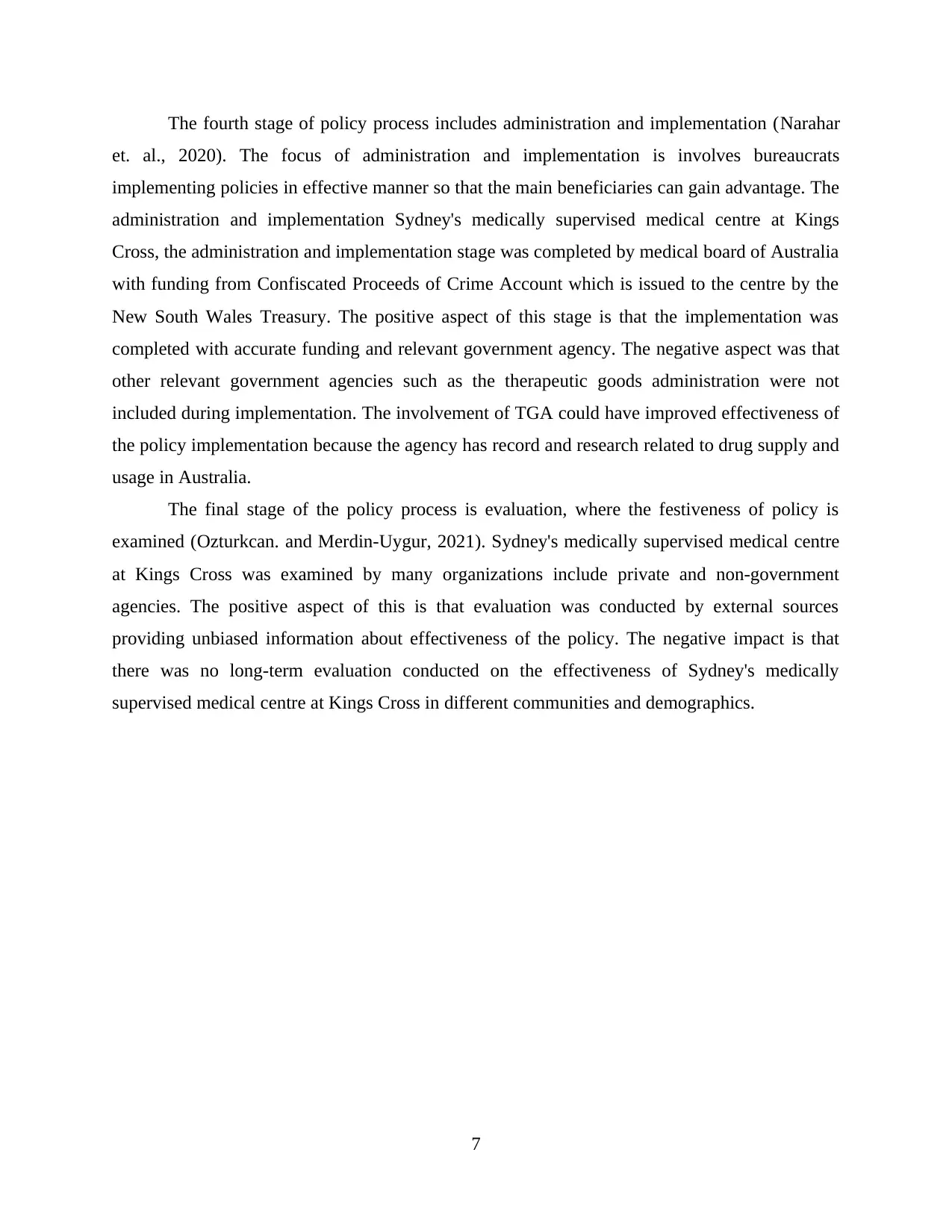
The fourth stage of policy process includes administration and implementation (Narahar
et. al., 2020). The focus of administration and implementation is involves bureaucrats
implementing policies in effective manner so that the main beneficiaries can gain advantage. The
administration and implementation Sydney's medically supervised medical centre at Kings
Cross, the administration and implementation stage was completed by medical board of Australia
with funding from Confiscated Proceeds of Crime Account which is issued to the centre by the
New South Wales Treasury. The positive aspect of this stage is that the implementation was
completed with accurate funding and relevant government agency. The negative aspect was that
other relevant government agencies such as the therapeutic goods administration were not
included during implementation. The involvement of TGA could have improved effectiveness of
the policy implementation because the agency has record and research related to drug supply and
usage in Australia.
The final stage of the policy process is evaluation, where the festiveness of policy is
examined (Ozturkcan. and Merdin-Uygur, 2021). Sydney's medically supervised medical centre
at Kings Cross was examined by many organizations include private and non-government
agencies. The positive aspect of this is that evaluation was conducted by external sources
providing unbiased information about effectiveness of the policy. The negative impact is that
there was no long-term evaluation conducted on the effectiveness of Sydney's medically
supervised medical centre at Kings Cross in different communities and demographics.
7
et. al., 2020). The focus of administration and implementation is involves bureaucrats
implementing policies in effective manner so that the main beneficiaries can gain advantage. The
administration and implementation Sydney's medically supervised medical centre at Kings
Cross, the administration and implementation stage was completed by medical board of Australia
with funding from Confiscated Proceeds of Crime Account which is issued to the centre by the
New South Wales Treasury. The positive aspect of this stage is that the implementation was
completed with accurate funding and relevant government agency. The negative aspect was that
other relevant government agencies such as the therapeutic goods administration were not
included during implementation. The involvement of TGA could have improved effectiveness of
the policy implementation because the agency has record and research related to drug supply and
usage in Australia.
The final stage of the policy process is evaluation, where the festiveness of policy is
examined (Ozturkcan. and Merdin-Uygur, 2021). Sydney's medically supervised medical centre
at Kings Cross was examined by many organizations include private and non-government
agencies. The positive aspect of this is that evaluation was conducted by external sources
providing unbiased information about effectiveness of the policy. The negative impact is that
there was no long-term evaluation conducted on the effectiveness of Sydney's medically
supervised medical centre at Kings Cross in different communities and demographics.
7
Paraphrase This Document
Need a fresh take? Get an instant paraphrase of this document with our AI Paraphraser
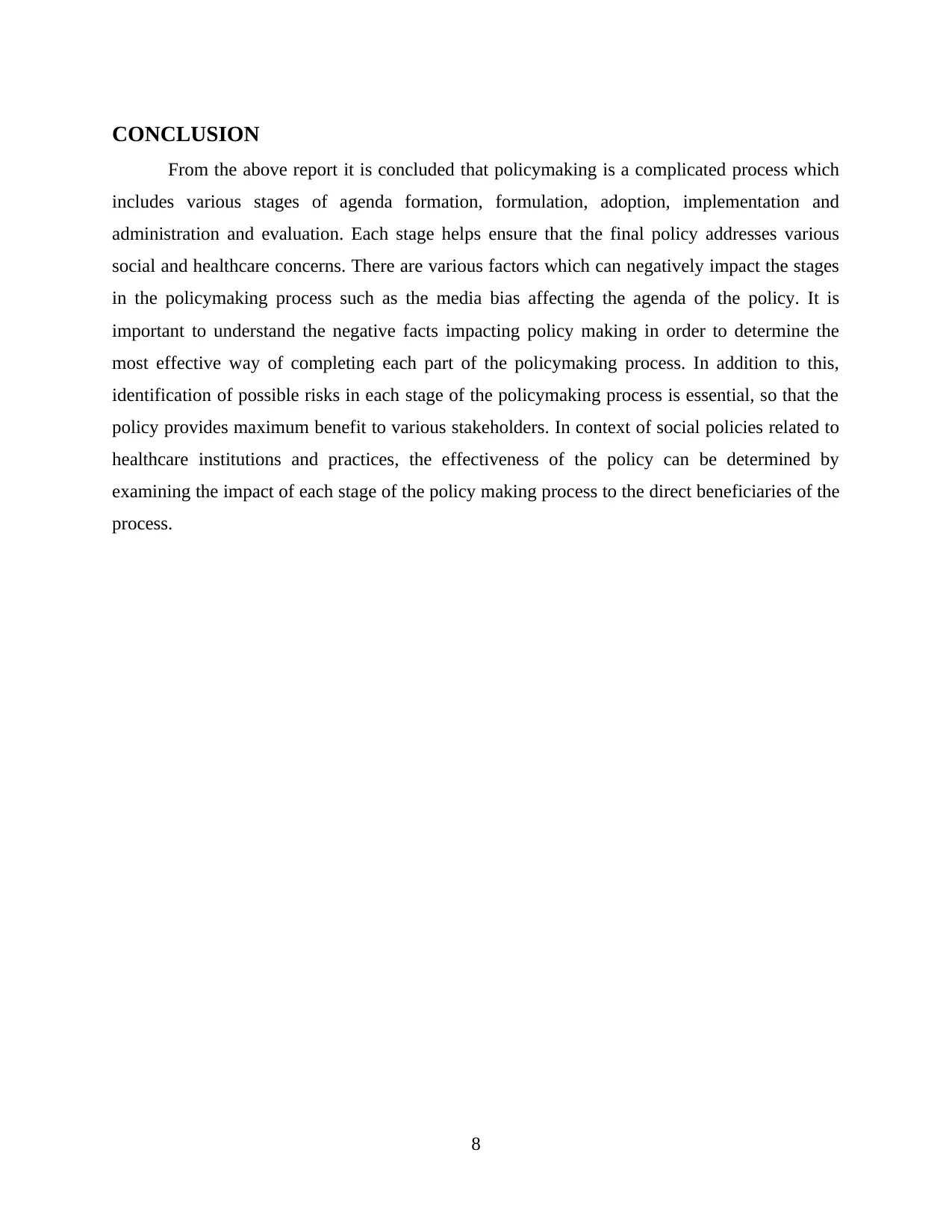
CONCLUSION
From the above report it is concluded that policymaking is a complicated process which
includes various stages of agenda formation, formulation, adoption, implementation and
administration and evaluation. Each stage helps ensure that the final policy addresses various
social and healthcare concerns. There are various factors which can negatively impact the stages
in the policymaking process such as the media bias affecting the agenda of the policy. It is
important to understand the negative facts impacting policy making in order to determine the
most effective way of completing each part of the policymaking process. In addition to this,
identification of possible risks in each stage of the policymaking process is essential, so that the
policy provides maximum benefit to various stakeholders. In context of social policies related to
healthcare institutions and practices, the effectiveness of the policy can be determined by
examining the impact of each stage of the policy making process to the direct beneficiaries of the
process.
8
From the above report it is concluded that policymaking is a complicated process which
includes various stages of agenda formation, formulation, adoption, implementation and
administration and evaluation. Each stage helps ensure that the final policy addresses various
social and healthcare concerns. There are various factors which can negatively impact the stages
in the policymaking process such as the media bias affecting the agenda of the policy. It is
important to understand the negative facts impacting policy making in order to determine the
most effective way of completing each part of the policymaking process. In addition to this,
identification of possible risks in each stage of the policymaking process is essential, so that the
policy provides maximum benefit to various stakeholders. In context of social policies related to
healthcare institutions and practices, the effectiveness of the policy can be determined by
examining the impact of each stage of the policy making process to the direct beneficiaries of the
process.
8
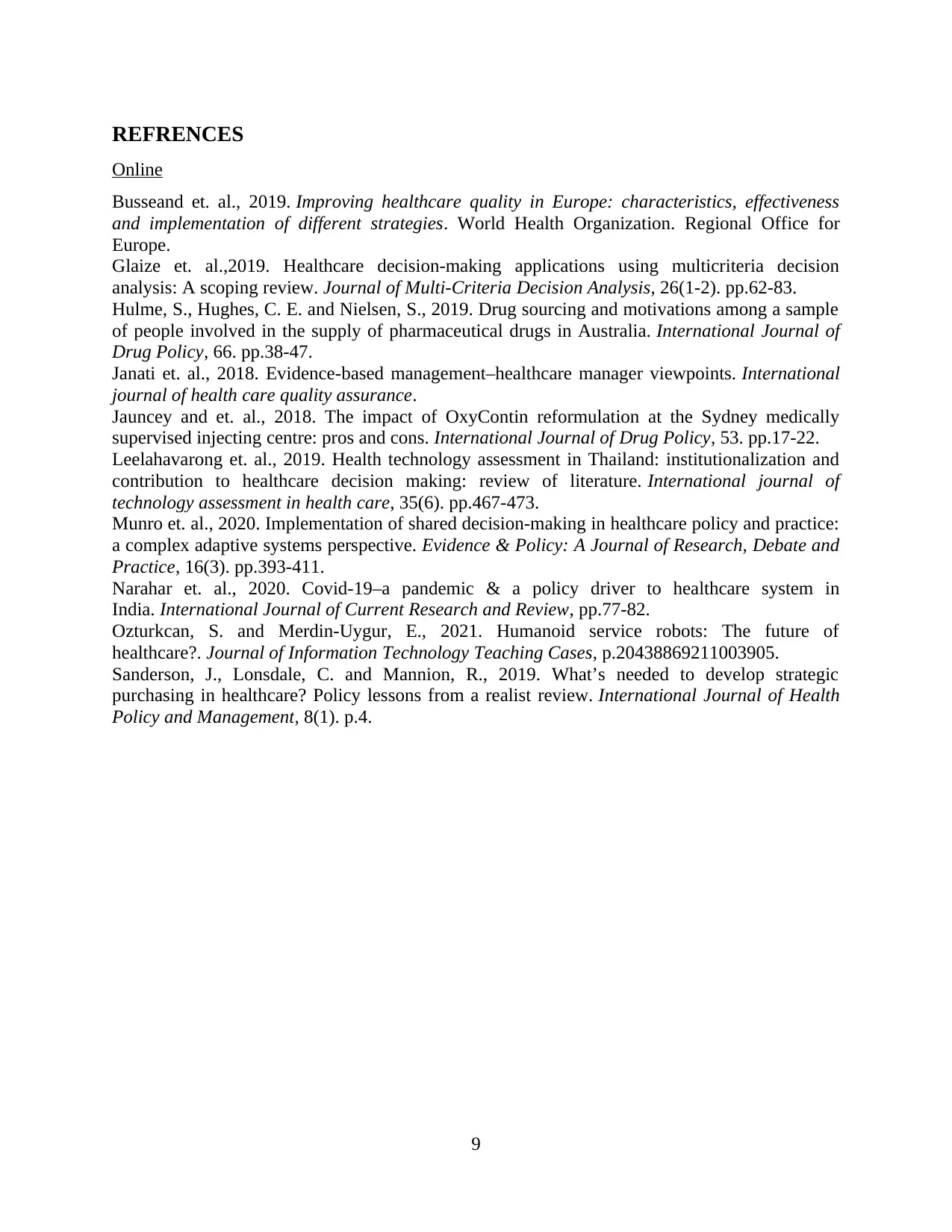
REFRENCES
Online
Busseand et. al., 2019. Improving healthcare quality in Europe: characteristics, effectiveness
and implementation of different strategies. World Health Organization. Regional Office for
Europe.
Glaize et. al.,2019. Healthcare decision‐making applications using multicriteria decision
analysis: A scoping review. Journal of Multi‐Criteria Decision Analysis, 26(1-2). pp.62-83.
Hulme, S., Hughes, C. E. and Nielsen, S., 2019. Drug sourcing and motivations among a sample
of people involved in the supply of pharmaceutical drugs in Australia. International Journal of
Drug Policy, 66. pp.38-47.
Janati et. al., 2018. Evidence-based management–healthcare manager viewpoints. International
journal of health care quality assurance.
Jauncey and et. al., 2018. The impact of OxyContin reformulation at the Sydney medically
supervised injecting centre: pros and cons. International Journal of Drug Policy, 53. pp.17-22.
Leelahavarong et. al., 2019. Health technology assessment in Thailand: institutionalization and
contribution to healthcare decision making: review of literature. International journal of
technology assessment in health care, 35(6). pp.467-473.
Munro et. al., 2020. Implementation of shared decision-making in healthcare policy and practice:
a complex adaptive systems perspective. Evidence & Policy: A Journal of Research, Debate and
Practice, 16(3). pp.393-411.
Narahar et. al., 2020. Covid-19–a pandemic & a policy driver to healthcare system in
India. International Journal of Current Research and Review, pp.77-82.
Ozturkcan, S. and Merdin-Uygur, E., 2021. Humanoid service robots: The future of
healthcare?. Journal of Information Technology Teaching Cases, p.20438869211003905.
Sanderson, J., Lonsdale, C. and Mannion, R., 2019. What’s needed to develop strategic
purchasing in healthcare? Policy lessons from a realist review. International Journal of Health
Policy and Management, 8(1). p.4.
9
Online
Busseand et. al., 2019. Improving healthcare quality in Europe: characteristics, effectiveness
and implementation of different strategies. World Health Organization. Regional Office for
Europe.
Glaize et. al.,2019. Healthcare decision‐making applications using multicriteria decision
analysis: A scoping review. Journal of Multi‐Criteria Decision Analysis, 26(1-2). pp.62-83.
Hulme, S., Hughes, C. E. and Nielsen, S., 2019. Drug sourcing and motivations among a sample
of people involved in the supply of pharmaceutical drugs in Australia. International Journal of
Drug Policy, 66. pp.38-47.
Janati et. al., 2018. Evidence-based management–healthcare manager viewpoints. International
journal of health care quality assurance.
Jauncey and et. al., 2018. The impact of OxyContin reformulation at the Sydney medically
supervised injecting centre: pros and cons. International Journal of Drug Policy, 53. pp.17-22.
Leelahavarong et. al., 2019. Health technology assessment in Thailand: institutionalization and
contribution to healthcare decision making: review of literature. International journal of
technology assessment in health care, 35(6). pp.467-473.
Munro et. al., 2020. Implementation of shared decision-making in healthcare policy and practice:
a complex adaptive systems perspective. Evidence & Policy: A Journal of Research, Debate and
Practice, 16(3). pp.393-411.
Narahar et. al., 2020. Covid-19–a pandemic & a policy driver to healthcare system in
India. International Journal of Current Research and Review, pp.77-82.
Ozturkcan, S. and Merdin-Uygur, E., 2021. Humanoid service robots: The future of
healthcare?. Journal of Information Technology Teaching Cases, p.20438869211003905.
Sanderson, J., Lonsdale, C. and Mannion, R., 2019. What’s needed to develop strategic
purchasing in healthcare? Policy lessons from a realist review. International Journal of Health
Policy and Management, 8(1). p.4.
9
⊘ This is a preview!⊘
Do you want full access?
Subscribe today to unlock all pages.

Trusted by 1+ million students worldwide
1 out of 9
Related Documents
Your All-in-One AI-Powered Toolkit for Academic Success.
+13062052269
info@desklib.com
Available 24*7 on WhatsApp / Email
![[object Object]](/_next/static/media/star-bottom.7253800d.svg)
Unlock your academic potential
Copyright © 2020–2025 A2Z Services. All Rights Reserved. Developed and managed by ZUCOL.





